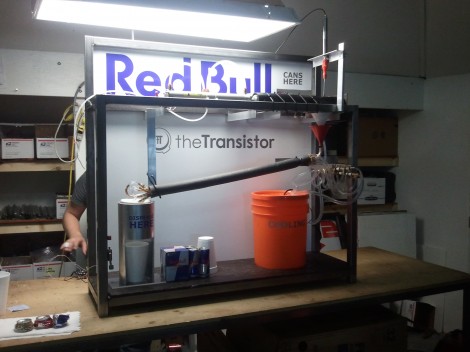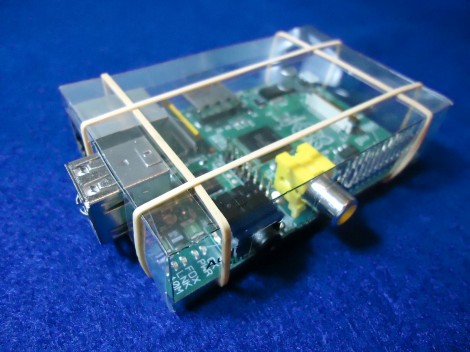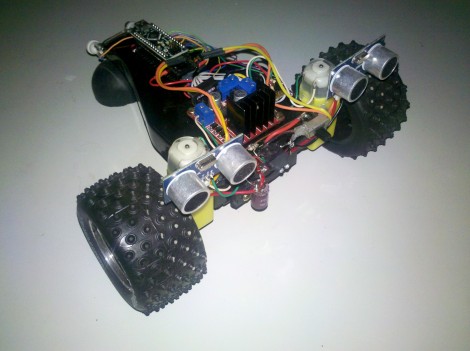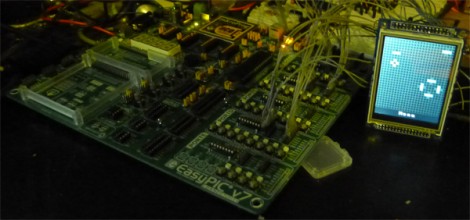
Members of theTransistor, a Provo, Utah based Hackerspace, are showing off their entry in the Red Bull Creation contest. This is an all-in-one energy drink delivery system. It can take a warm can of Red Bull from a reserve rack and turn it into a chilled cup of goodness in no time. And it (kind of) cleans up after itself too!
The process starts when a can is opened by lancing it through the side walls. At the upper right corner of the rig you can see the apparatus that is responsible for this beverage extraction technique. The drink drains from the newly created openings into a funnel below. It then enters a heat exchanger the team built by surrounding an aluminum pipe with several copper pipes. The copper has ice water circulating through them from the orange bucket that serves as the reservoir. By the time the drink gets to the cup on the bottom left it is ready to drink. The empty can is crush, falling into a bin and making space for the next in the 16-can backup supply.
















